Strange Metal Structure That ‘Defies Rules of Science’ Found in Ancient Ruins
Researchers have been fascinated by the unique and mysterious iron pillar in Dehli’s UNESCO-listed Qutb Minar complex for centuries. The iron monument has stood for over 1,500 years without rusting, leading many to question whether it is the product of an ancient civilization with an advanced understanding of metallurgy well beyond their time.
A groundbreaking study by the esteemed experts at the University of Delhi has finally unraveled the mystery, cementing the iron pillar’s status as an “ancient Indian metallurgical and engineering marvel.”
The Origin of Dehli’s Iron Pillar
The origin of Dehli’s iron pillar is steeped in mystery. One account suggests it was created during the Gupta Empire, around the 4th and 5th centuries, under the guidance of Chandragupta II, also referred to as Vikramaditya.
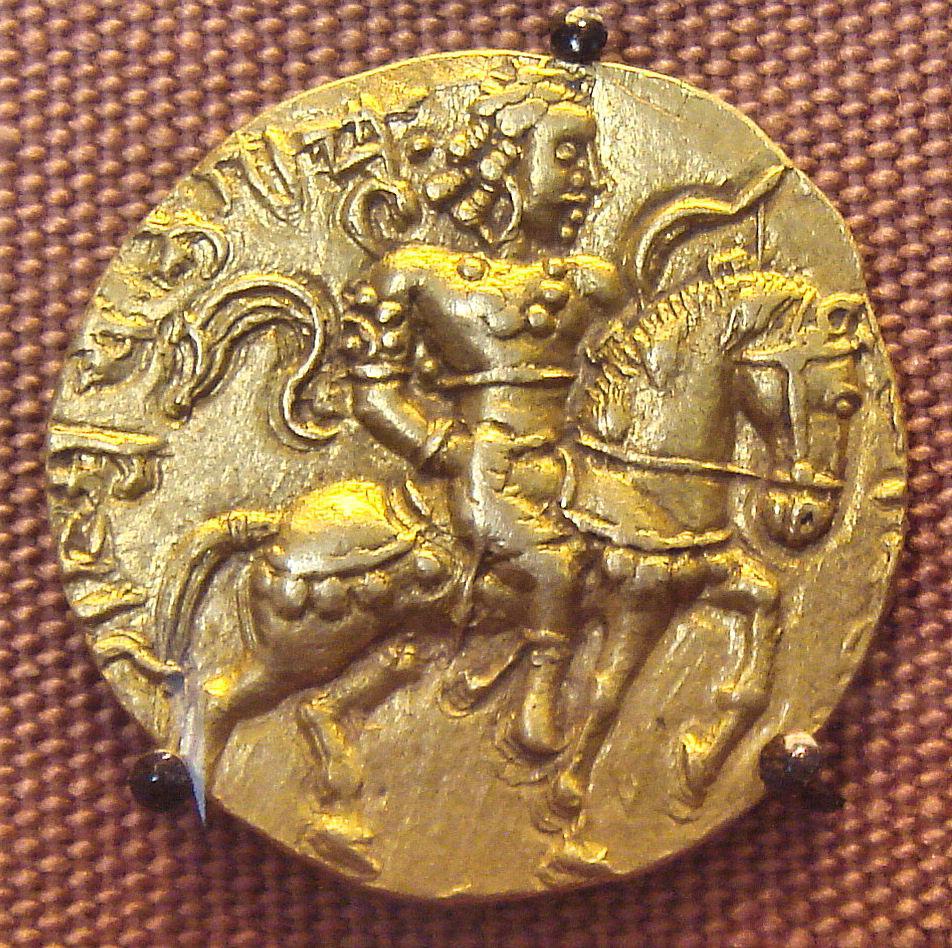
Source: Wikimedia
According to this legend, the metal pillar once stood in the Varaha Temple of Udayagiri Caves, near Vidisha in Madhya Pradesh, serving as a monument dedicated to the revered deity, Lord Vishnu.
Astronomical Use
Another popular theory about the pillar suggests it was actually used by Varāhamihira, a renowned astronomer in King Vikramaditya’s court.

Source: Wikimedia
According to Vikramjit Singh Rooprai, a heritage activist and educator, “One of his books, the ‘Surya Siddhanta,’ details methods for calculating celestial positions, eclipses, and other astronomical phenomena—and it is believed that he used a tall pillar in his calculations.”
The Fascination With the Iron Pillar
While the mystery surrounding the pillar’s origin is intriguing, researchers are also interested in discovering how an iron pillar can withstand the elements for over 1,600 years without rusting.
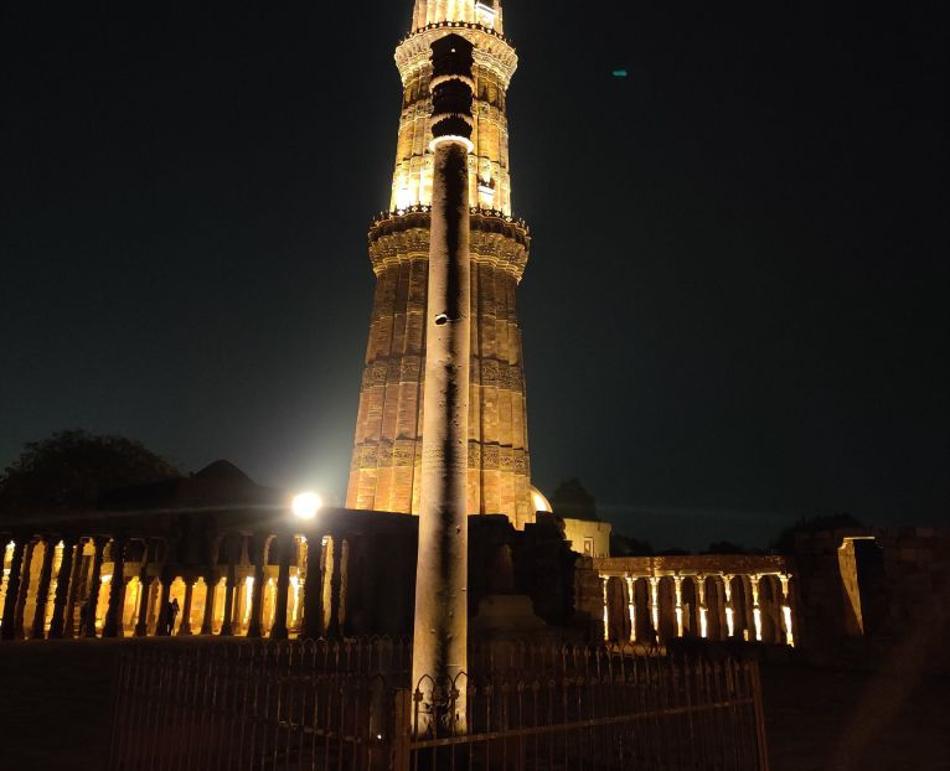
Source: Pallava Bagla/Corbis via Getty Images
The pillar, which stands around 7 meters tall and weighs up to six tons, looks as pristine as the day it was crafted, defying everything we thought we knew about metal. Due to Delhi’s intense heat and foot traffic, many are perplexed by its resilience to deterioration.
The Pillar of Seven Metals
Writing in 1333 AD, the revered Moroccan explorer Ibn Battista sheds insight into the composition of the unique pillar. “In the center of [Delhi] mosque is the awe-inspiring column of which nobody knows of what metal it is constructed,” he wrote.
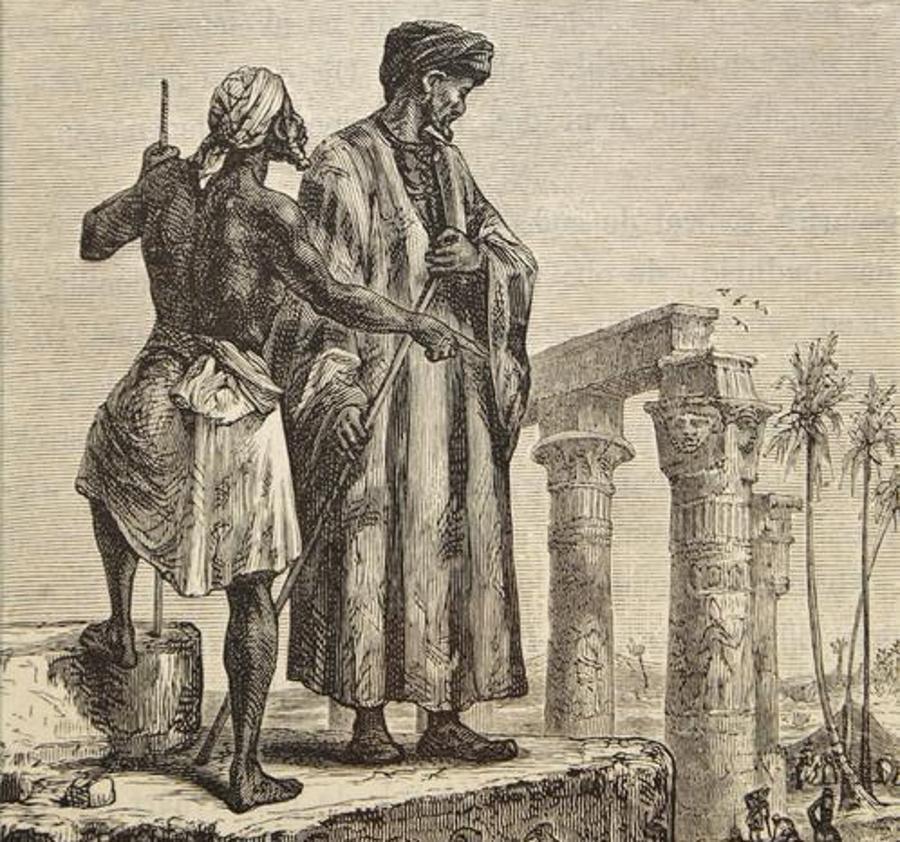
Source: Wikimedia
He continued, “One of their learned men told me that it is called ‘Haft Jûsh,’ which means ‘seven metals,’ and that it is composed of these seven. A part of this column, of a finger’s length, has been polished, and this polished part gives out a brilliant gleam. Iron makes no impression on it.”
Theories Surrounding the Ancient Monument
The iron monument’s pristine conditions and resistance to erosion have led to numerous other theories over the years. However, it appears the strange pillar simply showcases the extraordinary talents of ancient Indian metalworkers.

Source: Freepik
Now, a new study, in which researchers maliciously analyzed the pillar to better understand the complex monument, believes they have finally uncovered the complex chemistry that keeps it from eroding.
Experts Publish Their Findings
Researchers from the University of Delhi conducted the study and published their findings in Applied Surface Science Advances.

Source: Wikimedia
They wrote, “The pillar, renowned for its craftsmanship, flawless surface and resistance to corrosion behavior, is a prominent monument demonstrating an indisputable record of the ancient Indian metallurgical and engineering marvel.”
Purifying the Iron
The study details how ancient Indian metalworkers managed to purify their iron to a staggering 98%, a feat unheard of during the era. This method was carefully guarded and passed on from generation to generation.
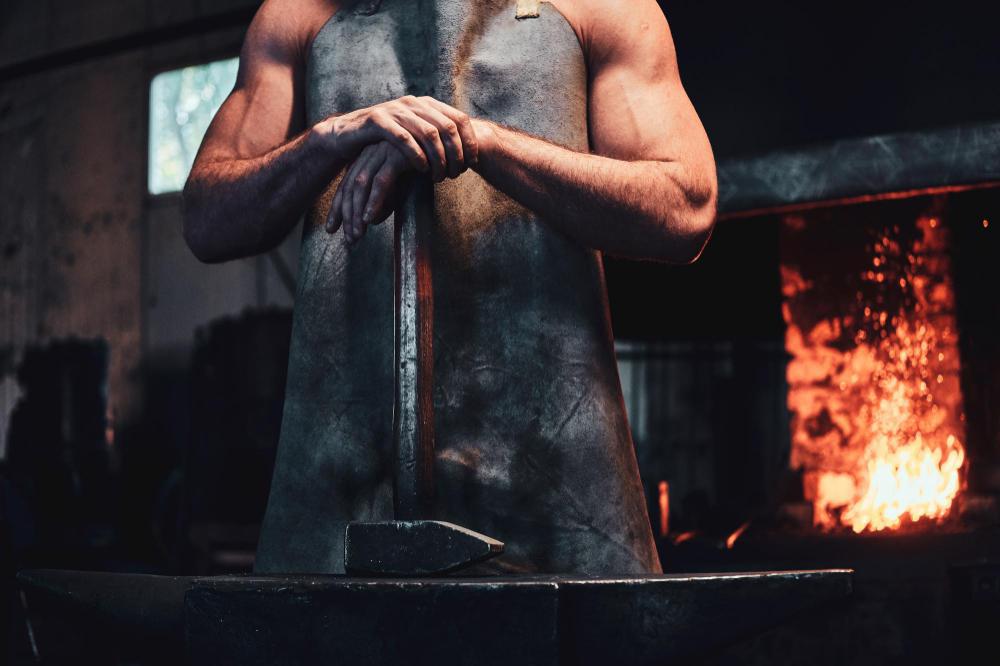
Source: Wikimedia
According to their research, the workers used an extremely high heat, yet not so hot that it would melt the metal. It became a “soft spongy mass which was hammered to be shaped into the desired objects,” the study’s authors said.
Removing the Impurities
Several lumps of this sponge-like iron material were laid out and hammered to separate the impurities, resulting in the metal taking on a “pancake” shape.

Source: freepik
The researchers then explained how the body of the pillar was contracted. They explain, “The heated iron pancakes were then placed one over another, and both were joined by hammering using hand-held hammers.”
Understanding Its Resistance to Erosion
One of the most important aspects of the study was to understand how it remained resistant to rusting for more than 1,600 years. The researchers conducted several tests to analyze the microstructure of the iron pillar.

Source: Wikimedia
Their findings led to a much better understanding of the properties that allowed the metal pillar to remain in such pristine condition for such an extensive period.
Phosphorus: The Secret Ingredient
“The corrosion resistant property of the sample of Iron Pillar in Delhi was mainly due to the mode of its fabrication resulting in high slag inclusions dispersed in three dimensions around the metal,” the study concludes.

Source: Wikimedia
It continued, “The P (phosphorus) present in FePO4 (ferric phosphate) is oxidized to phosphate, which acts as an inhibitor and promotes the formation of protective oxide films for preventing corrosion.”
The Protective Film
According to the researchers, “The protective film on the pillar decreases the corrosion rate from 0.395 mm to 0.040 mm per year.”
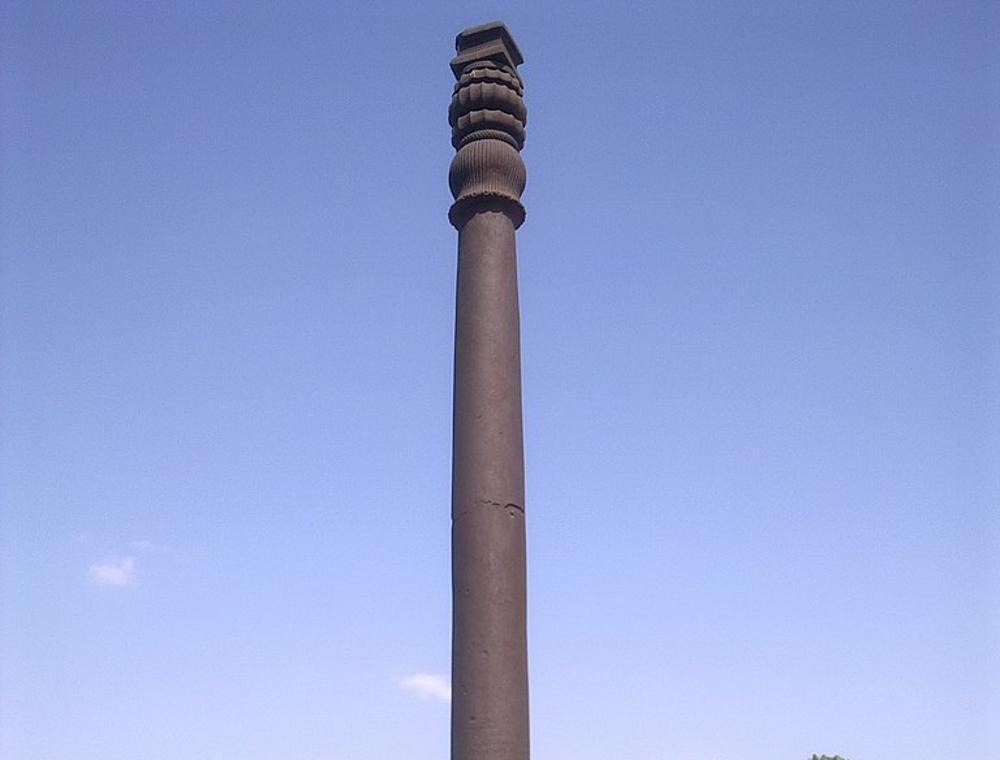
Source: Wikimedia
So, while theories of an ancient lost civilization or even aliens may have intrigued numerous people over the years, Dehli’s iron pillar is simply a display of Indian craftsmanship that went beyond what was thought possible during the era.
